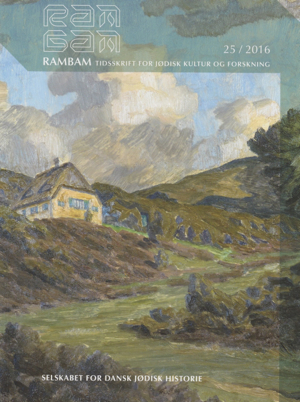Det gode selskab. Jødiske indvandrere i Det Kongelige Kjøbenhavnske Skydeselskab og Danske Broderskab
Resumé
The Great Society
The Royal Shooting Society of Copenhagen and Danish Brotherhood can be traced back to the 14thcentury and is likely Denmark’s oldest, still existing, society. Throughout the centuries, Danish monarchs, members of the aristocracy, the military, and the state, businessmen, master craftsmen, and other successful citizens have been shooting brothers in the Royal Shooting Society. Once accepted as a brother in the prestigious Society, a ‘painted target’ has to be given. Thee painted target traditionally depicts a motif that represents the shooting brother - his life, time and history.
Jewish shooting brothers do not appear in the Royal Shooting Society until the beginning of the 19th century. Not until the so-called ‘Letter of Freedom’ (the Decree of 1814 issued by King Frederik VI) did the Danish Jews become – almost – equal, with similar rights, to their fellow Christian citizens. After the changed legislation, it became easier for Danish Jews to pursue a career, to gain status, and, ultimately, to become members of the Shooting Society. Complete religious freedom, however, was not introduced until the Constitution of 1849.
The first preserved target given by a Jewish shooting brother is from 1828. Targets from 1828-1850 depict symbolic or allegorical-mythological subjects. From 1850-1900, the estate, or the company, owned by the shooting brother is typically depicted on the targets to an extent that seems to suggest a particular Jewish preference for these kinds of motifs. New motifs appear from 1900; amongst them, motifs dealing explicitly with dual Danish-Jewish cultural identity. The targets given by Jewish shooting brothers reflect a piece of Danish-Jewish assimilation history.





